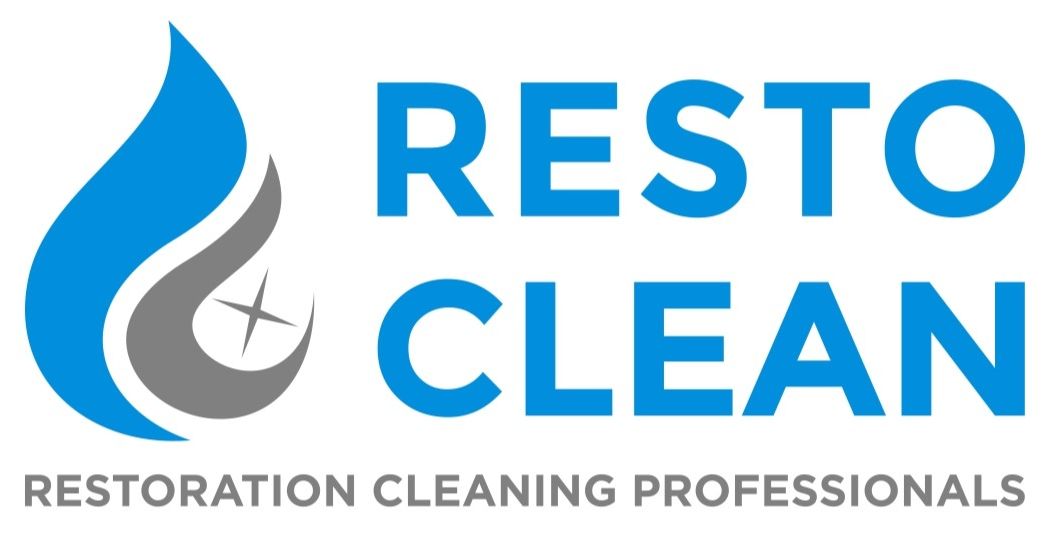Why Use Resto Clean for your Disaster?
Daisy Wick • February 3, 2023
Resto Clean: Disaster Response & Clean-up
When disaster strikes, you want to work with a company that you can trust to get the job done right. Resto Clean is that company. With years of experience in the industry, Resto Clean has the knowledge, skills, and equipment necessary to get your property back to its pre-disaster state.
Comprehensive Services: Resto Clean offers a wide range of disaster restoration services, including fire damage restoration, water damage restoration, mold remediation, and storm damage restoration. No matter what type of disaster has affected your property, Resto Clean has the expertise to help.
Fast Response Time: In an emergency situation, time is of the essence. Resto Clean understands this, which is why they have a fast response time to help get the restoration process started as soon as possible. They understand that the sooner the restoration process begins, the less the damage will be and the faster the restoration will be completed.
Experienced Technicians: Resto Clean is staffed by experienced technicians who have been trained in the latest restoration techniques. These technicians are committed to providing the best possible service to each and every customer, and they are always striving to improve their skills and knowledge in order to better serve the community.
Insurance Support: Resto Clean works closely with insurance companies to help make the restoration process as smooth and stress-free as possible. They understand the importance of having insurance coverage in the event of a disaster, and they are here to help you navigate the claims process and ensure that your property is fully restored.
Local Business: Resto Clean is a local business, so you can be sure that you are supporting the Nampa, Idaho community when you choose them for your disaster restoration needs. They understand the needs of the local community and are committed to providing the best possible service to each and every customer.
—------------
Disasters can be devastating, but with Resto Clean, you can rest assured that your property will be restored to its pre-disaster state. Whether you have suffered fire damage, water damage, mold damage, or storm damage, Resto Clean is here to help. With their fast response time, experienced technicians, insurance support, and commitment to the Nampa, Idaho community, you can be sure that you are in good hands with Resto Clean. So, don't wait any longer, contact Resto Clean today to start the disaster restoration process.

By Daisy Wick
•
January 11, 2024
A fire is a devastating event that can leave behind not only physical damage but also emotional scars. When the flames are finally extinguished, the road to recovery begins. It's essential to understand the importance of professional fire damage restoration and learn about effective ways to prevent such disasters in the first place. Why Professional Fire Damage Restoration Matters When a fire engulfs your home, the aftermath can be overwhelming. The consequences go beyond charred walls and burnt belongings; there are hidden dangers that only professionals can manage effectively: Safety: Fire-damaged structures can be unstable, posing a significant risk to anyone attempting to enter. Professional restoration teams are equipped to assess the structural integrity and ensure it's safe to enter the premises. Smoke and Soot: Smoke and soot damage extends far beyond the visible areas. They can penetrate walls, HVAC systems, and even ductwork. Professionals have the tools and expertise to thoroughly clean and deodorize affected areas. Water Damage: Often, firefighting efforts involve significant water usage. This can lead to water damage, mold growth, and further structural issues. Restoration experts can mitigate water damage and prevent mold infestations. Content Restoration: Fire-damaged personal belongings often carry immense sentimental value. Professional restoration services can salvage, clean, and restore items that might otherwise be lost forever. Insurance Claims: Dealing with insurance after a fire can be complex. Restoration professionals can document the damage, provide accurate estimates, and communicate with insurance adjusters to streamline the claims process. Thorough Cleanup: Fire damage is not limited to what's visible. Professionals ensure that hidden hazards and toxins, like asbestos or lead, are properly managed during the restoration process. Preventing Fire Damage: Safety First While professional fire damage restoration is vital after a fire, preventing a fire in the first place is even more crucial. Here are some key steps to minimize the risk of fire: Install Smoke Alarms: Ensure you have working smoke alarms on every level of your home and inside each bedroom. Regularly check and replace batteries. Fire Extinguishers: Place fire extinguishers in key areas like the kitchen, garage, and near heating appliances. Know how to use them. Electrical Safety: Regularly inspect electrical wiring and appliances for signs of wear or damage. Avoid overloading circuits and extension cords. Safe Cooking Practices: Stay vigilant in the kitchen while cooking. Keep flammable materials away from the stove and turn off appliances when not in use. Heating Safety: Maintain heating systems, fireplaces, and chimneys. Keep space heaters at a safe distance from flammable materials. Candle Caution: Use candles with care, keeping them away from curtains and other flammable objects. Smoking Safety: If you smoke, do so outdoors. Use deep, sturdy ashtrays, and ensure cigarettes are fully extinguished. Escape Plan: Develop and practice a fire escape plan with your family. Ensure all members know multiple ways to exit the home. Fire damage can be catastrophic, but with prevention and professional restoration, you can move forward and rebuild your life after a fire. Safety awareness and preparation are your best allies in reducing the risk of such a devastating event.

By Daisy Wick
•
October 9, 2023
Water damage in your home can be a daunting experience, leaving you grappling with dampness, mold, and structural concerns. Fortunately, there are specialized tools and equipment, such as dehumidifiers, designed to assist in the restoration process. In this blog, we'll explore what dehumidifiers are and how they play a crucial role in mitigating water damage and restoring your home to its former glory. Understanding Water Damage Before diving into the benefits of dehumidifiers, it's essential to grasp the extent of water damage. When water infiltrates your home, it can saturate walls, floors, and furnishings. This excess moisture creates an environment conducive to mold growth, structural damage, and the deterioration of your belongings. Timely and effective action is crucial to prevent further harm. What Are Dehumidifiers? Dehumidifiers are specialized appliances designed to extract excess moisture from the air in your home. Unlike air movers or typical fans, dehumidifiers target the humidity levels, making them a valuable tool in the restoration process. How Dehumidifiers Work Dehumidifiers function by pulling in moist air, cooling it to condense the moisture, and then expelling dry air back into the room. Here's how they operate: Moisture Removal: Dehumidifiers draw in humid air and pass it over coils that cool the air, causing moisture to condense into water droplets. Water Collection: The condensed moisture is collected in a reservoir or drained away through a hose, depending on the type of dehumidifier. Humidity Control: Dehumidifiers continuously monitor and control humidity levels in the room, ensuring they remain at an optimal, safe range. Benefits of Dehumidifiers Dehumidifiers offer a multitude of benefits in the aftermath of water damage: Mold Prevention: By reducing humidity levels, dehumidifiers inhibit the growth of mold and mildew, safeguarding your indoor air quality and health. Drying Surfaces: Dehumidifiers expedite the drying process of surfaces, including walls, carpets, and furnishings, preventing further water damage. Structural Preservation: Efficient moisture removal with dehumidifiers helps preserve the structural integrity of your home, preventing issues like wood rot and weakened building materials. Allergen Reduction: Lower humidity levels also reduce the presence of dust mites and other allergens, creating a healthier living environment. Energy Efficiency: Dehumidifiers can make your HVAC system more efficient, as dry air feels cooler, allowing you to lower your thermostat and save on energy costs. Placement and Strategy To maximize the effectiveness of dehumidifiers, proper placement and a strategic approach are essential. Restoration professionals strategically position these machines to target areas with the highest humidity levels, ensuring a comprehensive drying process. Conclusion Dehumidifiers are invaluable tools in restoring water-damaged homes. Their ability to reduce humidity, prevent mold growth, and protect your property's structural integrity is essential. When faced with water damage, consider employing dehumidifiers alongside other restoration efforts. Acting swiftly and efficiently with these moisture-removing appliances can significantly minimize the impact of water damage and ensure a successful restoration process, returning your home to its pre-damaged condition.

By Daisy Wick
•
August 21, 2023
Disasters can strike unexpectedly, leaving homes and businesses in Nampa, Idaho, grappling with chaos and damage. In these moments of distress, having a dedicated disaster cleanup team on your side can make all the difference. In this comprehensive guide, we'll delve into how Nampa's disaster cleanup experts stand ready to provide swift and effective assistance, ensuring your property's recovery and your peace of mind. Immediate Response in Times of Crisis: Nampa's disaster cleanup team understands the urgency of the situation: 24/7 Availability: Regardless of the time of day, these experts are available around the clock to respond to emergencies. Rapid Deployment: They arrive promptly, equipped with the necessary tools and expertise to assess the damage and initiate cleanup. Efficiency: Professionals work efficiently to prevent further damage escalation and minimize the impact on your property. Comprehensive Assessment and Customized Solutions: Each disaster situation is unique, and Nampa's cleanup experts tailor their approach accordingly: Thorough Evaluation: Experts conduct a comprehensive assessment of the damage, identifying areas of concern and potential hazards. Customized Plan: Based on their assessment, professionals develop a personalized restoration plan, ensuring no detail is overlooked. Advanced Equipment and Techniques: Nampa's disaster cleanup teams are equipped with state-of-the-art tools and techniques: Water Extraction: Industrial-grade pumps and vacuums are employed to swiftly remove standing water, preventing further damage. Drying and Dehumidification: High-capacity dehumidifiers and advanced drying techniques are used to eliminate excess moisture. Mold Prevention and Remediation: Nampa's cleanup experts understand the risk of mold growth post-disaster: Swift Action: Experts promptly address areas prone to mold growth, ensuring thorough drying and proper ventilation. Mold Assessment: They conduct mold assessments to identify existing growth and take steps to prevent further colonization. Structural Repairs and Restoration: To restore your property to its pre-disaster condition, Nampa's cleanup teams offer comprehensive services: Structural Repair: From damaged drywall to compromised foundations, these experts undertake necessary repairs. Content Restoration: Salvageable items are meticulously cleaned, sanitized, and restored to their original condition. Insurance Assistance and Stress Relief: Navigating insurance claims can be daunting, but Nampa's disaster cleanup experts offer valuable assistance: Documentation: Professionals document the restoration process, providing evidence for insurance claims. Claims Support: These experts can liaise with your insurance provider, ensuring a smoother claims process. Conclusion: Your Partner in Restoration When disaster strikes in Nampa, Idaho, having a dependable disaster cleanup team by your side is invaluable. With their rapid response, expert assessment, advanced equipment, and commitment to your property's restoration, these professionals become your partners in navigating the aftermath of a crisis. Remember, in the face of adversity, Nampa's disaster cleanup experts are the beacon of hope, restoring not only your property but also your peace of mind.
